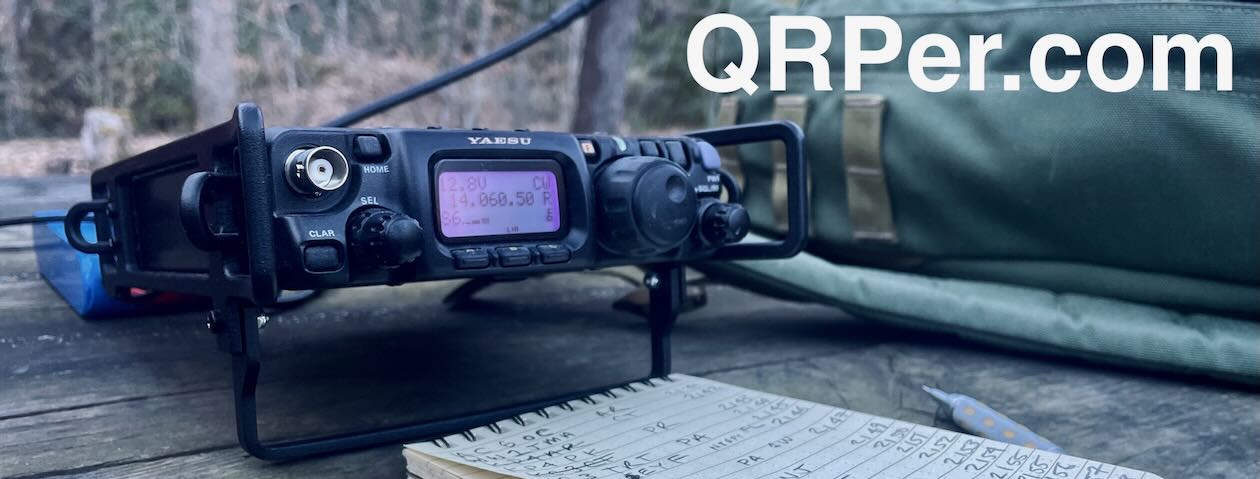On March 30, 2022, I took my factory-assembled (tr)uSDX transceiver on a POTA activation at South Mountains State Park.
It was a “test flight” of sorts since I’d only had the (tr)uSDX for a few days and had not taken it to the field.
I wrote up an assessment from that initial POTA activation mainly to give other potential (tr)uSDX owners an idea of how well one of these super-affordable radios might perform.
Difficult to critique
It’s difficult to critique a 5 band HF radio that you can purchase as a kit for less than $100 and fully-assembled and tested for less than $150…shipped!
On the one hand, I think it’s one of the most amazing portable HF radio innovations of the past decade. It simply blows my mind that the developers (DL2MAN and PE1NNZ) could make this modest radio hardware do so very much. It’s truly a triumph of engineering and a fun little radio.
On the other hand, this isn’t a high-end radio, so we can’t expect performance like we’d see in an Elecraft, Icom, or Yaesu field radio, for example. I never expected this, in fact, but was very curious if the performance would be “good enough” for POTA or SOTA. So many had asked me about buying a (tr)uSDX as their dedicated POTA radio.
I found using the (tr)uSDX for POTA was actually quite fun, and I certainly achieved my goal of activating a POTA park with it.
So yes, it’s good enough!
That said, I haven’t reached for the (tr)uSDX to do POTA or SOTA since last March because I prefer the performance characteristics of my other radios.
My biggest complaint, frankly, is that the audio fidelity is pretty poor. The noise floor of the (tr)uSDX is higher than most HF radios and audio amplification is very basic. I notice a lot of electronic noises (pulsing, etc.) in my unit. I find it a bit fatiguing to listen to for long sessions with my headphones. The internal speaker isn’t really a viable speaker for doing an activation–it’s more akin to an emergency speaker, if anything.
When plugged into an external amplified speaker, the audio is much improved. The pops and internal noises are still there, but it has better overall fidelity and the volume can be raised enough to hear weak signals (this can’t be easily done via the internal speaker).
It struck me that a DSP device might clean up the (tr)uSDX’s audio and noise floor a bit.
Enter the bhi Dual In-Line DSP filter
Sometime during the beginning of the pandemic, I reached out to bhi Noise Cancelling Products and asked if I could test one of their DSP units as a loaner. I’ve always felt that bhi manufactured the best DSP products in the amateur radio market.
At the time, I wanted one of my friends and contributors on the SWLing Post blog to test the bhi unit and see if it might help out a QRM situation that popped up at his QTH. I thought it would make for a great evaluation since I have little to no QRM at my home.
Graham, at bhi, kindly sent me a unit–the Dual In-Line Noise Eliminating Module–and as I prepared to forward it to my friend, his noise was no longer an issue. I can’t remember the details now, but there was no need to send it to him.
I notified Graham that I would like to test it myself, but that my plate was so full it would take time. What ended up happening, though, was I completely forgot about it due to a busy family life at the time.
I re-discovered the unit this year and spoke (apologized) to Graham at the 2023 Hamvention. Of course, he had no issue at all and was very forgiving. He’s a great fellow.
I thought pairing this bhi DSP unit to the (tr)uSDX would be a great way to, perhaps, cut down on the listening fatigue.
Fort Dobbs State Historic Site (K-6839)
 On Wednesday, July 5, 2023, I had an opportunity to test the (tr)uSDX/bhi pairing at Fort Dobbs State Park. Continue reading Field Report: Testing the bhi Dual In-Line with the (tr)uSDX, making a big blunder, and P2P with Teri!
On Wednesday, July 5, 2023, I had an opportunity to test the (tr)uSDX/bhi pairing at Fort Dobbs State Park. Continue reading Field Report: Testing the bhi Dual In-Line with the (tr)uSDX, making a big blunder, and P2P with Teri!




















































